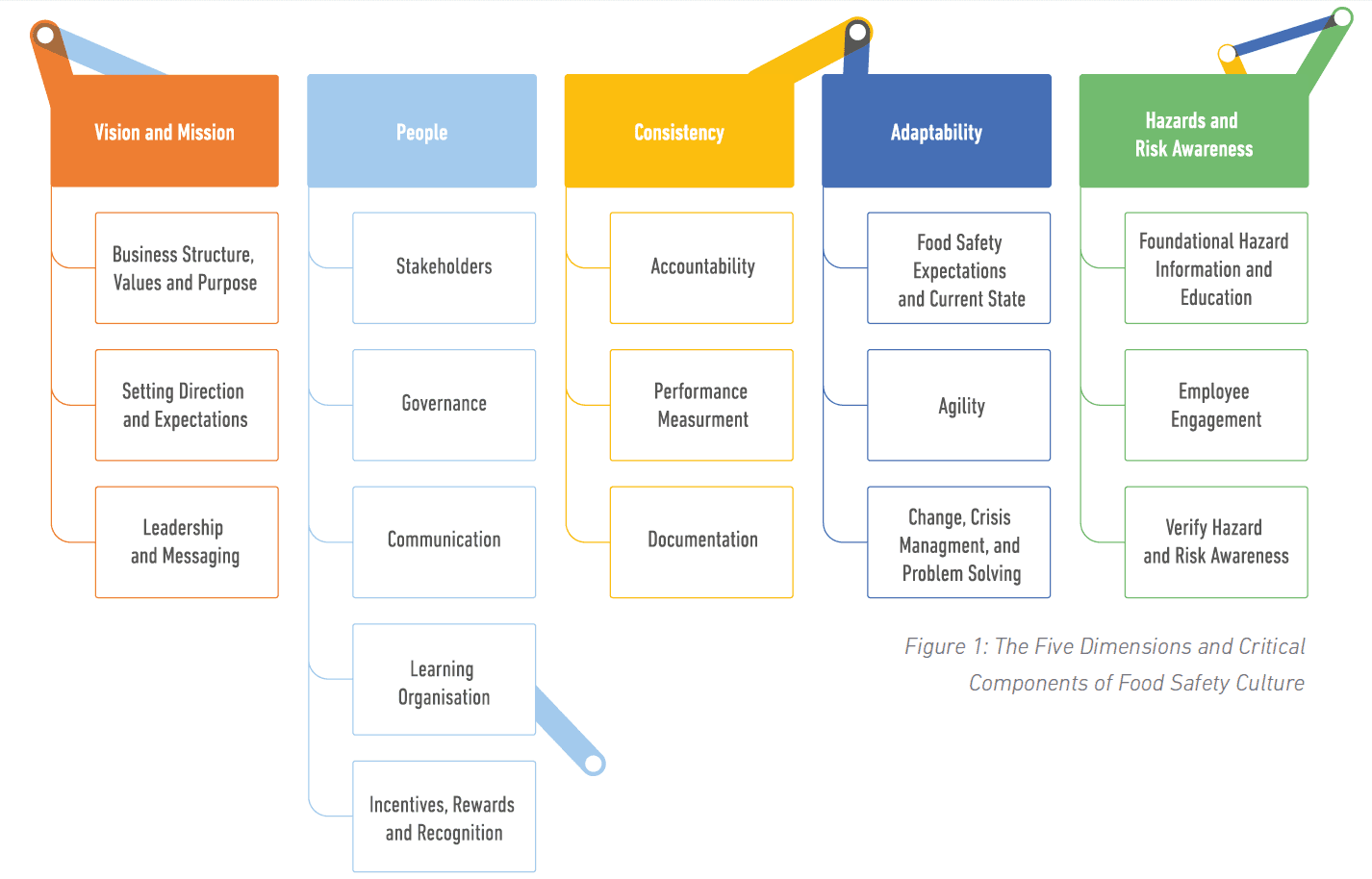Building Food Safety Culture
The phrase “food safety culture” has been a buzz word in the food industry. It is now a requirement for food company management to demonstrate compliance with food safety culture in any GFSI recognized food safety certifications such as SQF, BRC.
What is a “food safety culture”?
Food Safety culture refers to your organization’s culture or practices towards food safety when no one is watching.
Why a “food safety culture” important to your organization beyond the GFSI requirements?
Food Safety cultures link your organization’s culture with food safety. It is essentially the building block of your organization’s direction to many other things such as human resource management, health and safety etc.
More importantly, when we speak about food safety, it is about keeping our consumers safe and happy, along with compliance with food regulatory requirements.
The GFSI scheme identified 5 key aspects of food safety culture developments. The following diagram indicated the five pillars for food safety culture development. Instead of going through all the pillars for food safety culture development. We will be focusing on two aspects: leadership and training.

5-Dimensions of Food Safety Culture
Leadership
Leadership is very important in developing and maintaining an organizational culture including a food safety culture. Did you notice the following at your workplace:
- Things that are required by upper management gets to the top of the list, regardless of how busy we get
This is simply us, being an employee, we are there to get things done by the company, represented by the upper management. Leadership goes from top to down. Imagine if you can put this to work for food safety culture….
- If our manager asks for something and never followed up, that means it is a recommendation and not a requirement.
Whether or not the above statement is true, as an employee, we assume that if no one mentioned it again, it is just a “thought” and we move on with our other workload.
- Ever work with someone that says don’t bother me, just do your work. Or here is what you need to do from A-Z. Now, compare this with someone who guide you through, when you need help.
A leader knows how to follow up with their team, giving them space to do the work and build trust for the team, that they will be there to assist. There is always time for the team.
What you do as a leader sets expectations for your team, on what to do and how to do it? Your team will be able to see your “aura” when it comes to food safety. They care for the things that you care. If food safety is one of them, it will be a priority.
Training
How many hours did you spend training your employees? Are you the person who leaves an employee with their co-worker on the production floor? Or the person who ensures your employees are trained before performing the tasks?
Training is so…. important because it helps our team to follow the developed procedures and to produce consistent products and services. Also, in the context of food safety culture, if they don’t know the right thing to do, they can’t follow the organization’s food safety culture. A question to ask yourself, what are the risk to your organization and food brand? Consider food recall, withdrawal, regulatory warnings and customer dissatisfaction.
Not enough time to train your staff? Try these
- Develop training materials for each task
- Recording the training
- Build a training plan for each staff
- Allocate 30 minutes a week for your staff to read through SOP or training materials
- Get help from external training providers
- Outsourcing training program: Content development and recording
If your staff is fully trained, then he/she can perform better and reduces waste. It also helps with staff retention.
Our Way of Building and Establishing Food Safety Culture
There are many ways to demonstrate a food safety culture. We recommend:
- Food Safety Culture training
- Establishing guidelines, do’s and don’ts for food safety culture.
Food Safety Culture Training –
SFPM Consulting offers a tailored made food safety culture training that is focused on each organization’s needs. Our practice can be tailored to be presented throughout 2 or 4 sessions, completed within 2 or 4 weeks. These fully guided training/ strategy sessions will help your food organization build and establish a strong food safety culture and foundation.
Pros:
- Tailored made to your organization needs
- Instead of sending only one representative to a food safety culture, you set aside time to build leaders of tomorrow for your organization
- .Set expectation on your organization culture- the do’s and don’ts
- Set expectations on the “carrot” and “stick.”
- Bring out your team’s “inner voice” and thoughts.
Strategy Call
Not sure how to build your food safety culture? Book a FREE strategy call with us. Nail down the big pictures and work through the details with us or with your team.
Leave a Reply